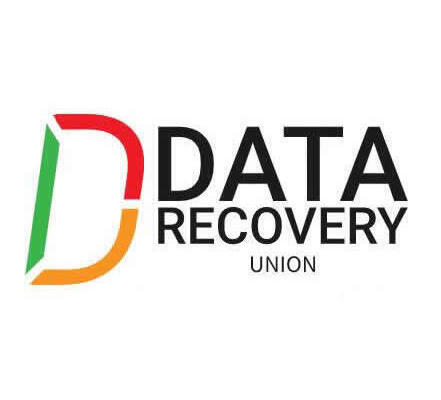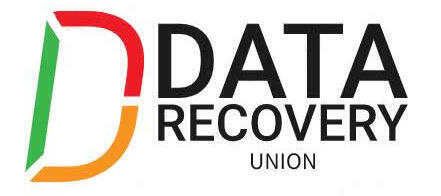The Backup Book (English)
(Disaster Recovery from Desktop to Data Center – ISBN: 9780972903905)
Publisher: Schaser Vartan Books
Format: Paperback
Published Date: July 2003
MSRP: $49.95
 Detailing what can go wrong in backup and recovery and how this applies to the various backup methods available, this book couples that information with recovery and business continuity tactics played out over the backdrop of various real-world scenarios. Covered is how freezes, corruption, and loss affect documents, equipment, and day-to-day business activities, and the cost of downtime and job re-creation is explained in a way that builds the best budget for availability, backup, and recovery. Protection and restoration of user data and from various locations and times is also covered, as well as how to keep a business running after a power failure, network failure, or other unforeseen event.
Detailing what can go wrong in backup and recovery and how this applies to the various backup methods available, this book couples that information with recovery and business continuity tactics played out over the backdrop of various real-world scenarios. Covered is how freezes, corruption, and loss affect documents, equipment, and day-to-day business activities, and the cost of downtime and job re-creation is explained in a way that builds the best budget for availability, backup, and recovery. Protection and restoration of user data and from various locations and times is also covered, as well as how to keep a business running after a power failure, network failure, or other unforeseen event.
Storage Area Networks for Dummies (English)
(ISBN: 9780764524806)
Publisher: For Dummies
Format: Paperback
Published Date: March 2003
MSRP: $29.99
 In case you weren’t sure, a storage area network, or SAN, is a collection of computers and storage devices connected over a high-speed optical network and dedicated to the task of storing and protecting data. SANs solve many of the data storage and management problems that have long bedeviled enterprise networks, and they save companies who use them a bundle. Which is why SAN administration is one of the highest-paid jobs in IT today. Add storage area networking to your resume and your phone will ring off the hook with calls by head-hunters promising of six-figure salaries. Bored with in your current IT job and looking for a change of pace-and bigger bucks? Then Storage Area Networks For Dummies is for you. Have you been tasked with designing, implementing, or troubleshooting your company’s SAN and need to play catch-up in a hurry? Look no further. In no time, this book gets you on track with the know-how and confidence you need to: Choose the right hardware for the job Design state-of-the-art SANs Implement a SAN and get it running like a well-oiled machine Configure, manage and troubleshoot SANs Seamlessly integrate two or more SANs Become a SAN sage and give your career a major boost From the ABCs of SANs to making the most of advanced SAN features, Storage Area Networks For Dummies covers all the bases in plain English and with loads of real-life examples. Key topics covered include: What are SANs, how they work, and who needs them SAN protocols, components, and common problems Designing and building a SAN SANs and disaster recovery Networking SANs Understanding, choosing, and using SAN backup solutions Making the most of Point-in-Time technology Outsourcing SANs Managing and troubleshooting SANs The solution to so many enterprise data storage problems, SANs equal heightened efficiency and productivity for organizations and greater prosperity for those who build and manage them. Let Storage Area Networks For Dummies help you get in on the ground floor of one of today’s hottest IT growth areas.
In case you weren’t sure, a storage area network, or SAN, is a collection of computers and storage devices connected over a high-speed optical network and dedicated to the task of storing and protecting data. SANs solve many of the data storage and management problems that have long bedeviled enterprise networks, and they save companies who use them a bundle. Which is why SAN administration is one of the highest-paid jobs in IT today. Add storage area networking to your resume and your phone will ring off the hook with calls by head-hunters promising of six-figure salaries. Bored with in your current IT job and looking for a change of pace-and bigger bucks? Then Storage Area Networks For Dummies is for you. Have you been tasked with designing, implementing, or troubleshooting your company’s SAN and need to play catch-up in a hurry? Look no further. In no time, this book gets you on track with the know-how and confidence you need to: Choose the right hardware for the job Design state-of-the-art SANs Implement a SAN and get it running like a well-oiled machine Configure, manage and troubleshoot SANs Seamlessly integrate two or more SANs Become a SAN sage and give your career a major boost From the ABCs of SANs to making the most of advanced SAN features, Storage Area Networks For Dummies covers all the bases in plain English and with loads of real-life examples. Key topics covered include: What are SANs, how they work, and who needs them SAN protocols, components, and common problems Designing and building a SAN SANs and disaster recovery Networking SANs Understanding, choosing, and using SAN backup solutions Making the most of Point-in-Time technology Outsourcing SANs Managing and troubleshooting SANs The solution to so many enterprise data storage problems, SANs equal heightened efficiency and productivity for organizations and greater prosperity for those who build and manage them. Let Storage Area Networks For Dummies help you get in on the ground floor of one of today’s hottest IT growth areas.
Disk Detective (English)
 (Secrets You Must Know to Recover Information from a Computer – ISBN: 9780873649926)
(Secrets You Must Know to Recover Information from a Computer – ISBN: 9780873649926)
Publisher: Paladin Pr
Format: Paperback
Published Date: September 1998
MSRP: $20.00
Secret Software (English)
 (Making the Most of Computer Resources for Data Protection, Information Recovery, Forensic Examination, Crime Investigation and More – ISBN: 9781581600889)
(Making the Most of Computer Resources for Data Protection, Information Recovery, Forensic Examination, Crime Investigation and More – ISBN: 9781581600889)
Publisher: Paladin Pr
Format: Paperback
Published Date: July 2000
MSRP: $20.00
Synopsis: Covers electronic document shredders, e-mail encryption, forensic software, detecting and indentifying intruders, steganography, espionage on the Web, image enhancement techniques, file recovery, and security measures.
Managing Raid on Linux (English)
 (ISBN: 9781565927308)
(ISBN: 9781565927308)
Publisher: Oreilly & Associates Inc
Format: Paperback
Published Date: December 2002
MSRP: $39.95
Implementing Backup and Recovery (English)
(The Readiness Guide for the Enterprise – ISBN: 9780471227144)
Publisher: John Wiley & Sons Inc
Format: Paperback
Published Date: June 2003
MSRP: $45.00
 Offers the first comprehensive reference on the topic of backup systems for both UNIX and Windows NT Provides a complete tutorial on the general topic of data backup systems along with a detailed, step-by-step guide for planning and full implementation of backup systems Authors include personal tips and strategic and tactical advice gained from many company implementations Uses VERITAS NetBackup product to illustrate backup system functions
Offers the first comprehensive reference on the topic of backup systems for both UNIX and Windows NT Provides a complete tutorial on the general topic of data backup systems along with a detailed, step-by-step guide for planning and full implementation of backup systems Authors include personal tips and strategic and tactical advice gained from many company implementations Uses VERITAS NetBackup product to illustrate backup system functions
DB2 on MVS Platform (English)
 (Data Sharing Recovery – ISBN: 9780738408583)
(Data Sharing Recovery – ISBN: 9780738408583)
Publisher: Vervante
Format: Paperback
Published Date: September 1997
MSRP: $43.00
Disaster Recovery Planning (English)
(Preparing for the Unthinkable – ISBN: 9780130462824)
Publisher: Prentice Hall
Format: Hardcover
Published Date: September 2002
MSRP: $69.99
 The #1 guide to protecting and recovering your key digital assets-now fully updated. Disaster recovery strategies after 9/11 Up-to-the-minute coverage: DR analysis, planning, strategy, testing, and emergency decision-making Solutions for centralized and decentralized environments, network and end-user recovery Advanced storage technologies and “time to data” metrics Implications of Web services and next-generation outsourcing Now more than ever, crucial information for every IT manager, sysadmin, and consultant! Disaster Recovery Planning, Third Edition is a start-to-finish update to the #1 guide to disaster recovery planning and implementation. Thoroughly revised to reflect the latest strategies and technologies, it also presents the disaster recovery lessons taught by 9/11, the California energy crisis, and the anthrax scare. In this book, Toigo offers focused, hands-on blueprints for disaster recovery in every environment, centralized and decentralized-with detailed coverage of building DR systems that address networks and encompass end-users who still maintain crucial enterprise data on local PCs and notebooks. Coverage includes: How to create a successful disaster recovery plan-with or without consultants Analyzing both technical and physical risks, including facility protection Choosing the right mainframe backup strategies Preventive and proactive techniques for backing up distributed, network-based systems New technologies and strategies for end-user recovery Emergency decision-making and recovery project teams Testing your plan and updating it to reflect organizational and technical change
The #1 guide to protecting and recovering your key digital assets-now fully updated. Disaster recovery strategies after 9/11 Up-to-the-minute coverage: DR analysis, planning, strategy, testing, and emergency decision-making Solutions for centralized and decentralized environments, network and end-user recovery Advanced storage technologies and “time to data” metrics Implications of Web services and next-generation outsourcing Now more than ever, crucial information for every IT manager, sysadmin, and consultant! Disaster Recovery Planning, Third Edition is a start-to-finish update to the #1 guide to disaster recovery planning and implementation. Thoroughly revised to reflect the latest strategies and technologies, it also presents the disaster recovery lessons taught by 9/11, the California energy crisis, and the anthrax scare. In this book, Toigo offers focused, hands-on blueprints for disaster recovery in every environment, centralized and decentralized-with detailed coverage of building DR systems that address networks and encompass end-users who still maintain crucial enterprise data on local PCs and notebooks. Coverage includes: How to create a successful disaster recovery plan-with or without consultants Analyzing both technical and physical risks, including facility protection Choosing the right mainframe backup strategies Preventive and proactive techniques for backing up distributed, network-based systems New technologies and strategies for end-user recovery Emergency decision-making and recovery project teams Testing your plan and updating it to reflect organizational and technical change
Clustering For Data Mining (English)
(A Data Recovery Approach – ISBN: 9781584885344)
Publisher: Chapman & Hall
Format: Hardcover
Published Date: April 2005
MSRP: $93.95
 Clustering is a discipline concerned with finding and describing cohesive groups, or clusters, in data. It is a key area of data mining and knowledge discovery topics devoted to finding hidden patterns of information in databases. This book covers a number of clustering methods in detail, unifying them in a consistent framework. It includes key issues such as data pre-processing, parameter setting, feature selection, and cluster validation, as well as a selection of examples that are followed throughout the book. It also offers techniques for data recovery clustering. This is an accessible book written with a minimal amount of mathematics, suitable for graduate level coursework or professional interest.
Clustering is a discipline concerned with finding and describing cohesive groups, or clusters, in data. It is a key area of data mining and knowledge discovery topics devoted to finding hidden patterns of information in databases. This book covers a number of clustering methods in detail, unifying them in a consistent framework. It includes key issues such as data pre-processing, parameter setting, feature selection, and cluster validation, as well as a selection of examples that are followed throughout the book. It also offers techniques for data recovery clustering. This is an accessible book written with a minimal amount of mathematics, suitable for graduate level coursework or professional interest.










